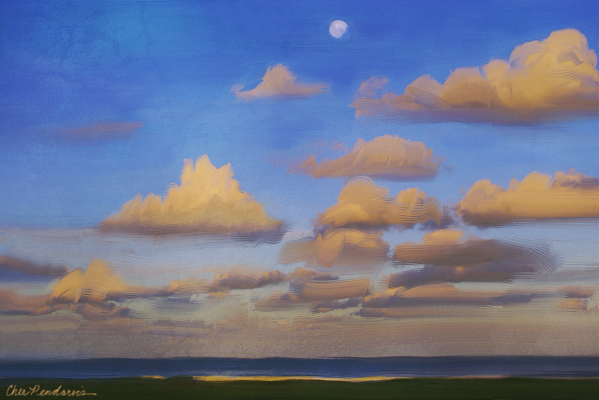
Blend a texture into your painting to simulate cracked or peeling paint. Artwork by Cher Pendarvis.
A grayscale illustration (top); a texture is blended into the tree (bottom). Artwork by Justin Buus.
Texture Painting isn’t simply manipulating a layer’s opacity. It lets you intelligently blend a texture into existing content using a range of stylus expressions, such as pressure. It respects the transparency of the selected texture, giving you full control of when, where, and how much texture is used. You start by choosing or creating a texture and pairing it with brushes designed specifically for adding texture. And by combining Texture brushes, flexible brush customization options, and the ability to capture and import your own textures, you can add any number of surfaces styles to your work. You can even add Dab Stencils, grain, and smudging to the brushes with all the speed, precision and control you expect from Painter. In addition, you can make your own custom textures from scratch or by modifying a preset texture. For more information about textures, see Textures.
This section includes the following topics:
| • | Painting with textures |
| • | Customizing Texture brushes |